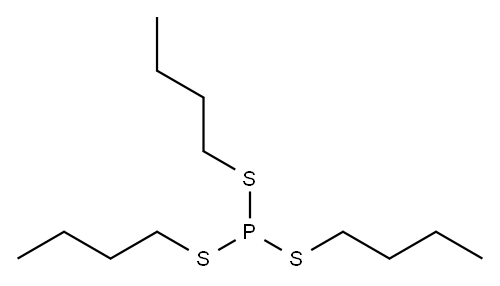Nearly colorless liquid. Insoluble in water; soluble in a variety of organic
solvents.
Organophosphate pesticide used in the agriculture industry
Merphos is an organothiophosphorus compound used as
a defoliant but the active ingredient is no longer contained in
any registered pesticide product in the US and in EU. Therefore,
Environmental Protection Agency (EPA) is characterizing it as
canceled.
The status of merphos in the EU pesticide database is ‘Not
Approved’ under the Regulation EC 1107/2009 and not
authorized at national level in EU countries. However
a maximum level of residues (MRL) is regulated in foods as the
default MRL of 0.01 mg kg-1 according to Art 18(1)(b) Reg
396/2005.
Merphos was used to defoliate cotton at application rates
of 1.1–2.2 kg active ingredient per acre and can induce leaf
abscission in some other plants, such as roses and hydrangeas.
It was particularly suited for total defoliation of cotton
preparatory to machine harvesting because the natural action
of the substance causes the leaves to drop in a relatively green
state with fresh weight adequate to cause them to fall to the
ground.
The technical product used to have 95% purity. Formulation
used to contain 720 g active ingredient per liter or being an
emulsifiable concentrate containing 6 lb per gallon.
Organothiophosphates, such as MERPHOS, are susceptible to formation of highly toxic and flammable phosphine gas in the presence of strong reducing agents such as hydrides. Partial oxidation by oxidizing agents may result in the release of toxic phosphorus oxides.
Cholinesterase inhibitor.
Poison by
intraperitoneal route. Moderately toxic by
ingestion and skin contact. A cholinesterase
inhibitor. Combustible when exposed to
heat or flame. Can react vigorously with
oxidzing materials. When heated to
decomposition it emits highly toxic fumes of
POx and SOx. Used as a defoliant. See also
PARATHION.
Merphos is adsorbed strongly to soil and oxidized to
S,S,S-tributyl phosphorotrithioate (DEF). The Koc estimated for
merphos is theoretically 62 000; accordingly, merphos would
be immobile in soil.
In water, merphos will be oxidized to DEF. The fact that
merphos is expected to adsorb strongly to particulate matter in
the water column, apparently did not impede its oxidation.
In the atmosphere, merphos will exist as an aerosol and be
removed by gravitational settling and readily oxidized to DEF.
Vapor-phase merphos will react with photochemically
produced hydroxyl radicals, with an estimated half-life of 4.9 h.

